Fundamentals of MLOps
Introduction to MLOps
Getting Started with Machine Learning Team
Welcome to this comprehensive guide on building machine learning (ML) teams. In this lesson, we explore how ML engineering teams are structured and the specific contributions made by various roles. We cover everything from the formation of the team to the deployment challenges that arise when transitioning from development to production.
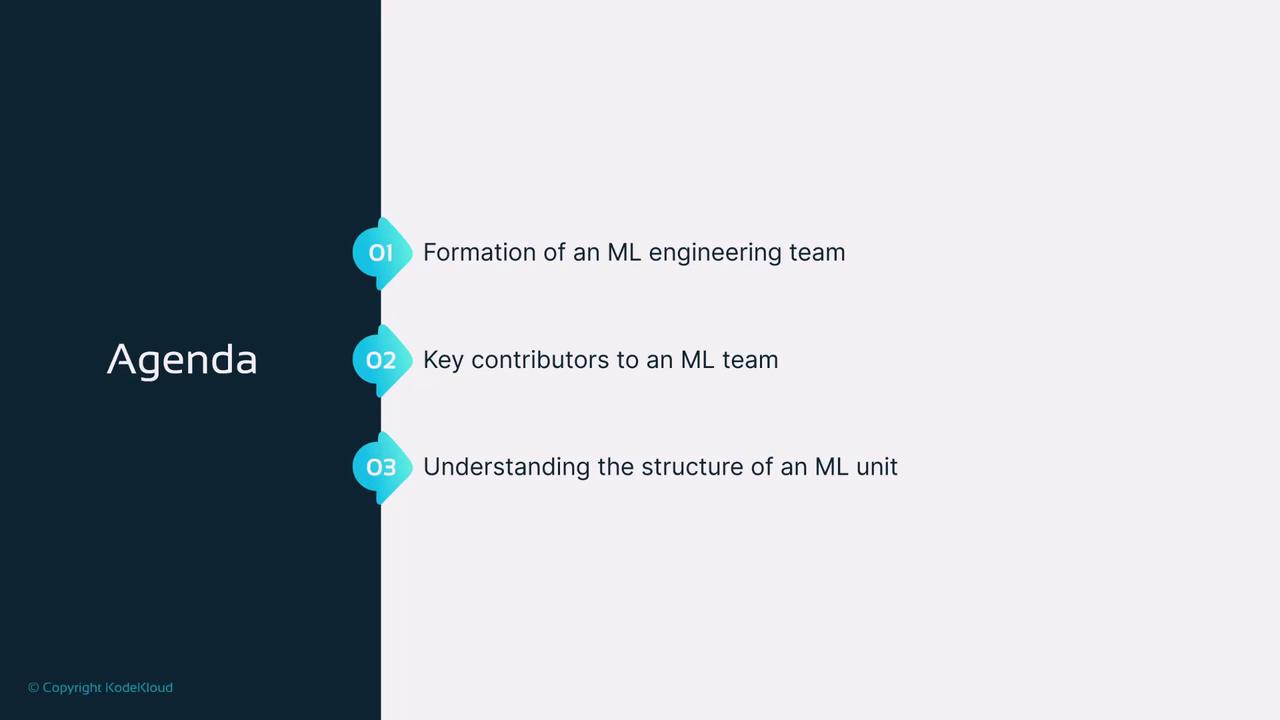
The Role of the Product Management Team
The product management team plays a vital role in identifying business use cases that can generate revenue. Their process includes:
- Defining Use Cases: They explore scenarios where ML can add value—such as ranking products on a large e-commerce website to ensure the best items are displayed prominently.
- Setting Business Goals: For example, the team might aim for a revenue increase of 5 million dollars from improved product rankings.
- Establishing Milestones and Metrics: Clear milestones help determine if the ML model is progressing as intended. These benchmarks are essential; if the project strays from its goals, the strategy can be revisited.
Note
Milestones and measurement criteria are critical. They offer guidance on whether to adjust the project strategy if expected outcomes are not meeting business goals.
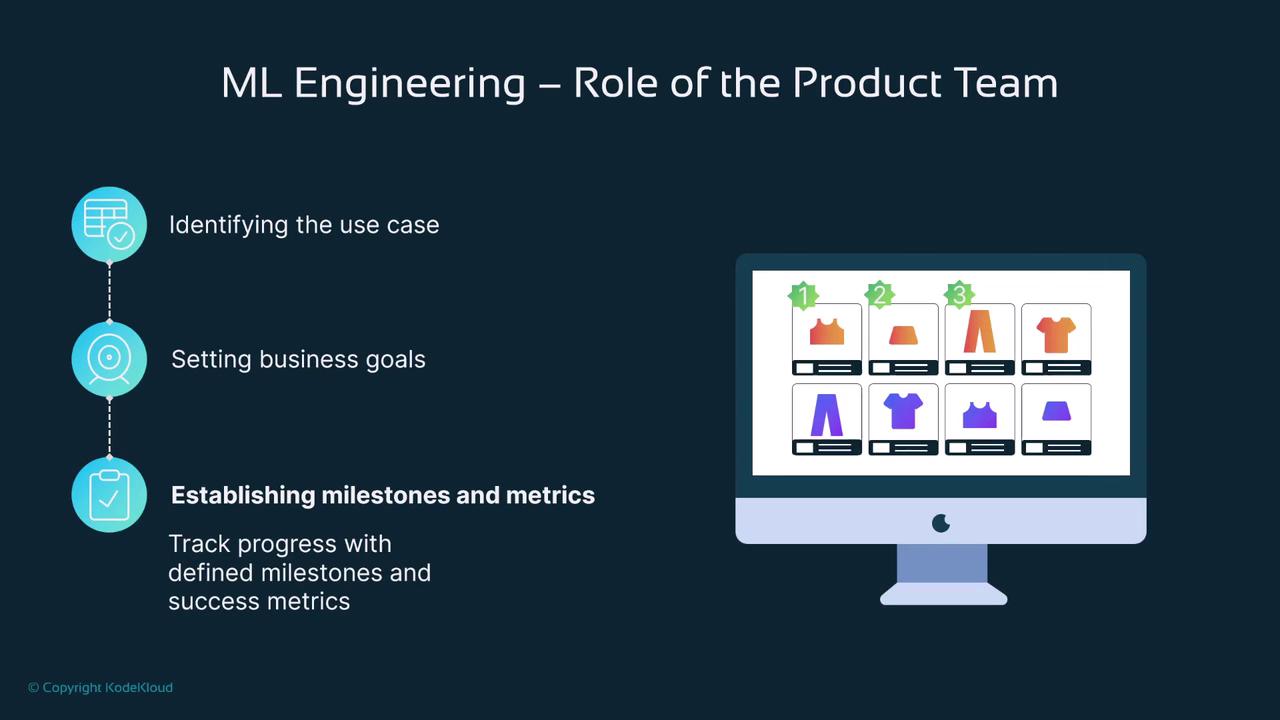
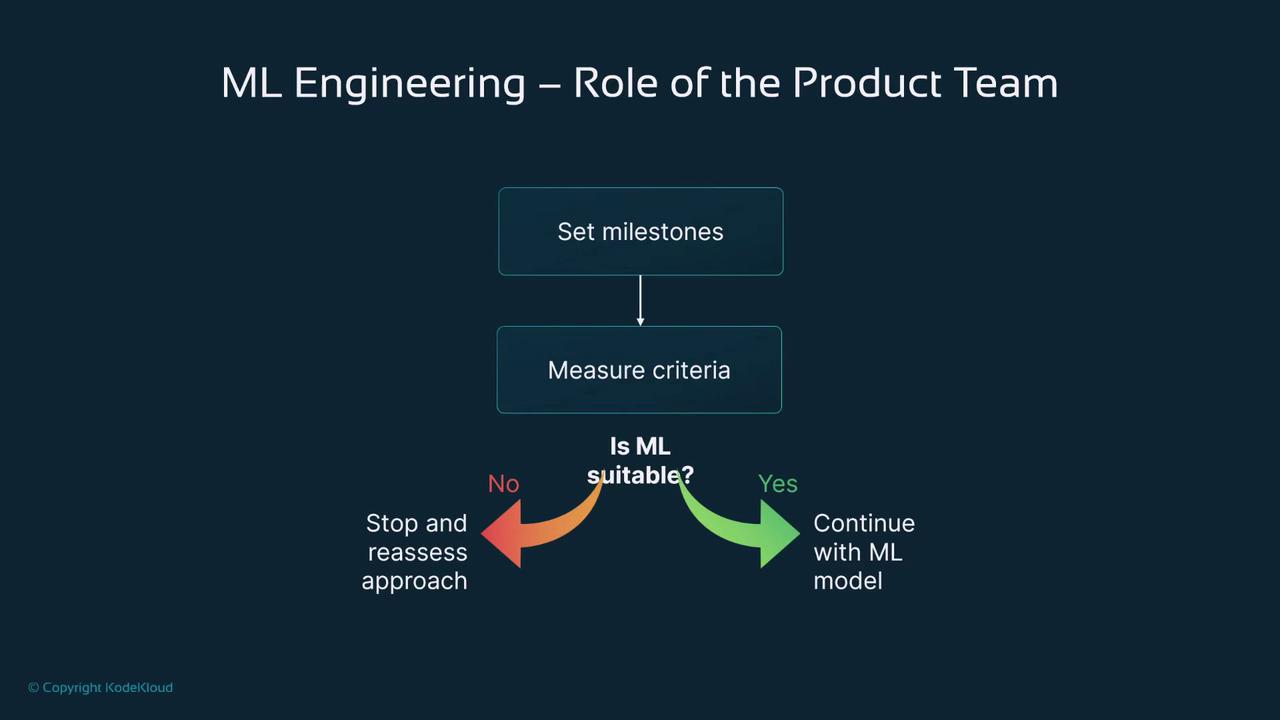
The Role of the Data Science Team
After the product team defines the business use case, the data science team takes center stage. Their responsibilities include:
- Assessing Data Availability: They first verify if the necessary data is available for model building.
- Model Selection and Design: If data exists, they proceed to choose and design the appropriate ML model. If not, they initiate strategies to acquire or generate the required data.
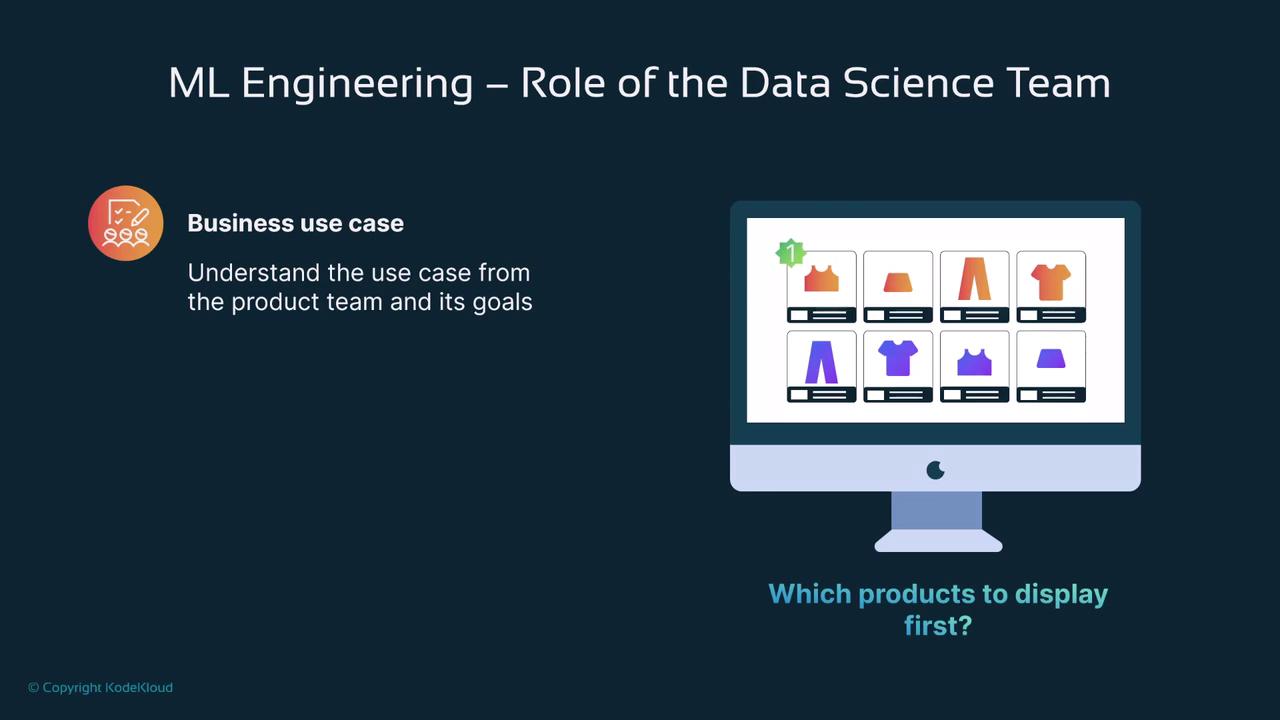
The Role of the Data Engineering/Analyst Team
Once the model requirements have been laid out by the data science team, the data engineering or analyst team steps in. Their tasks include:
- Data Collection and Preparation: Developing reliable ETL (Extract, Transform, Load) pipelines ensures a continuous flow of data into a data lakehouse.
- Real-Time Infrastructure Setup: In production environments, they support real-time data processing to enable continuous monitoring of the ML model's performance.
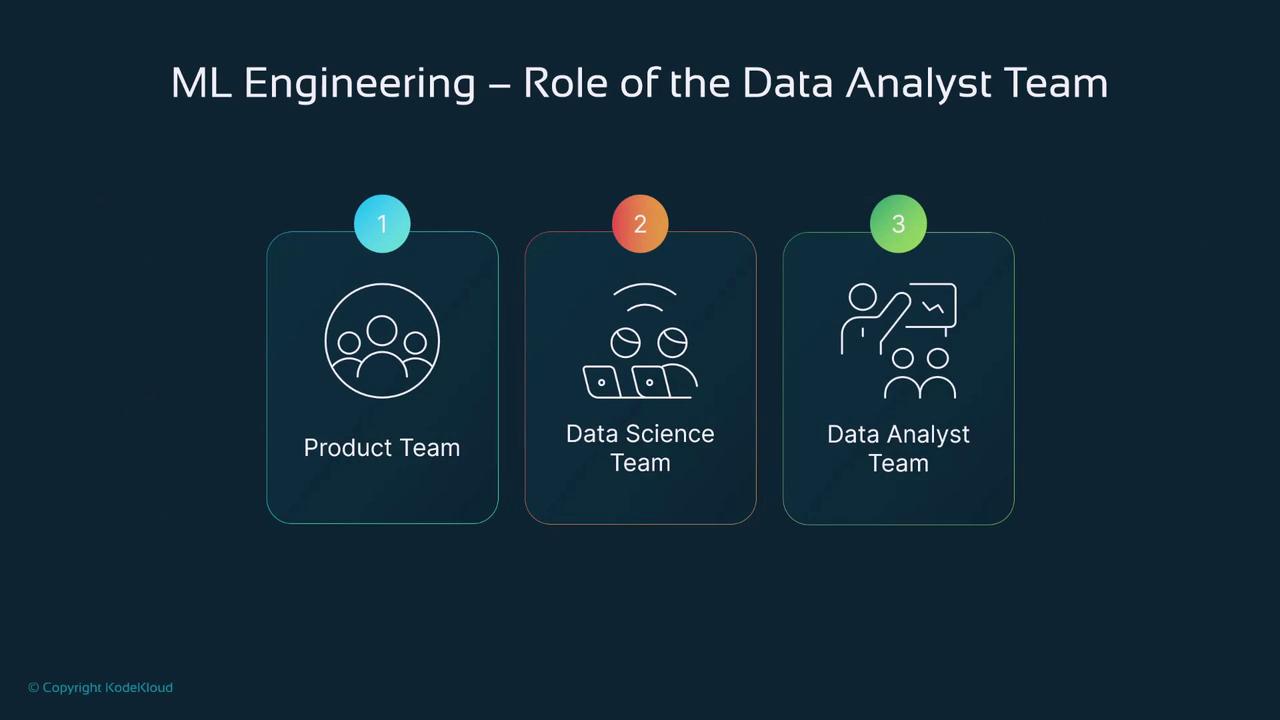
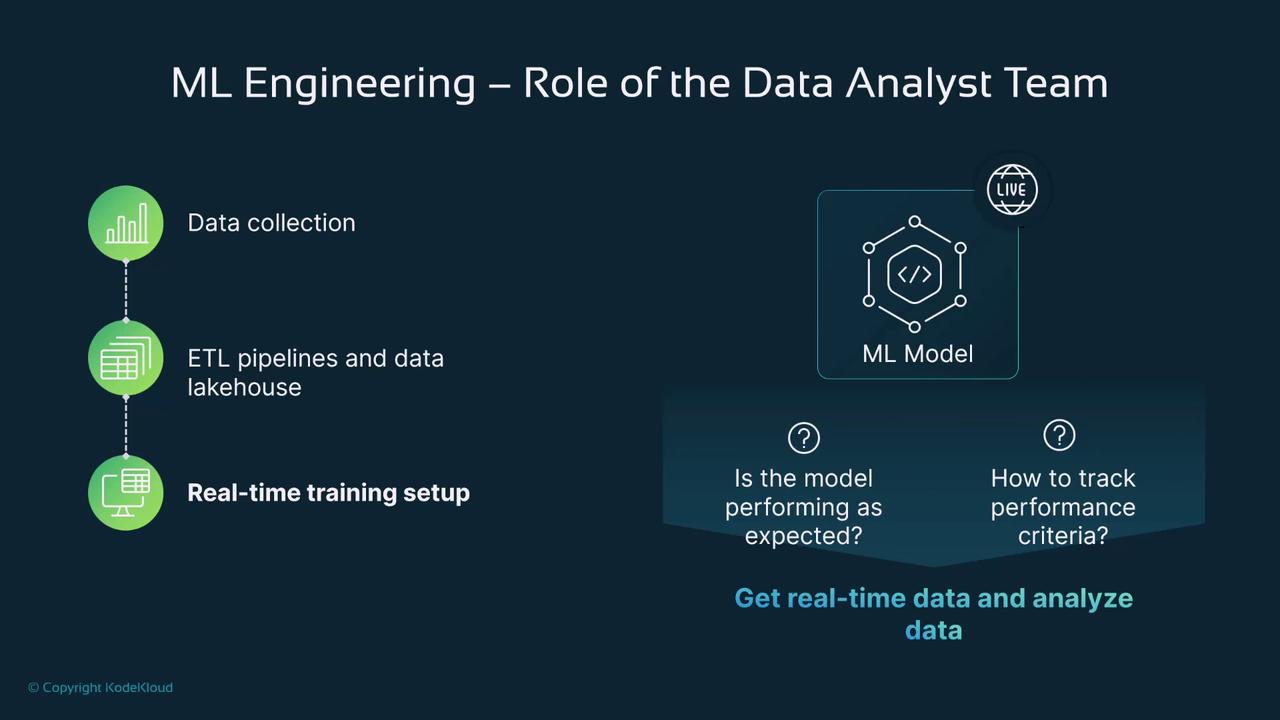
The Role of the DevOps (MLOps) Engineering Team
After the development of the ML model, several technical challenges must be addressed before deployment. The DevOps or MLOps engineering team focuses on:
- Deployment Environment Determination: Choosing the optimal environment for model deployment.
- API Integration: Building API services to facilitate communication with the ML model.
- Continuous Integration/Continuous Deployment (CI/CD): Managing new versions through a robust CI/CD pipeline.
- Infrastructure Management: Establishing model serving, maintaining registries, and monitoring system performance.
Note
Transitioning from a DevOps engineer to an MLOps engineer involves gaining specialized knowledge about ML infrastructure and lifecycle management, ensuring seamless integration of ML models into existing systems.

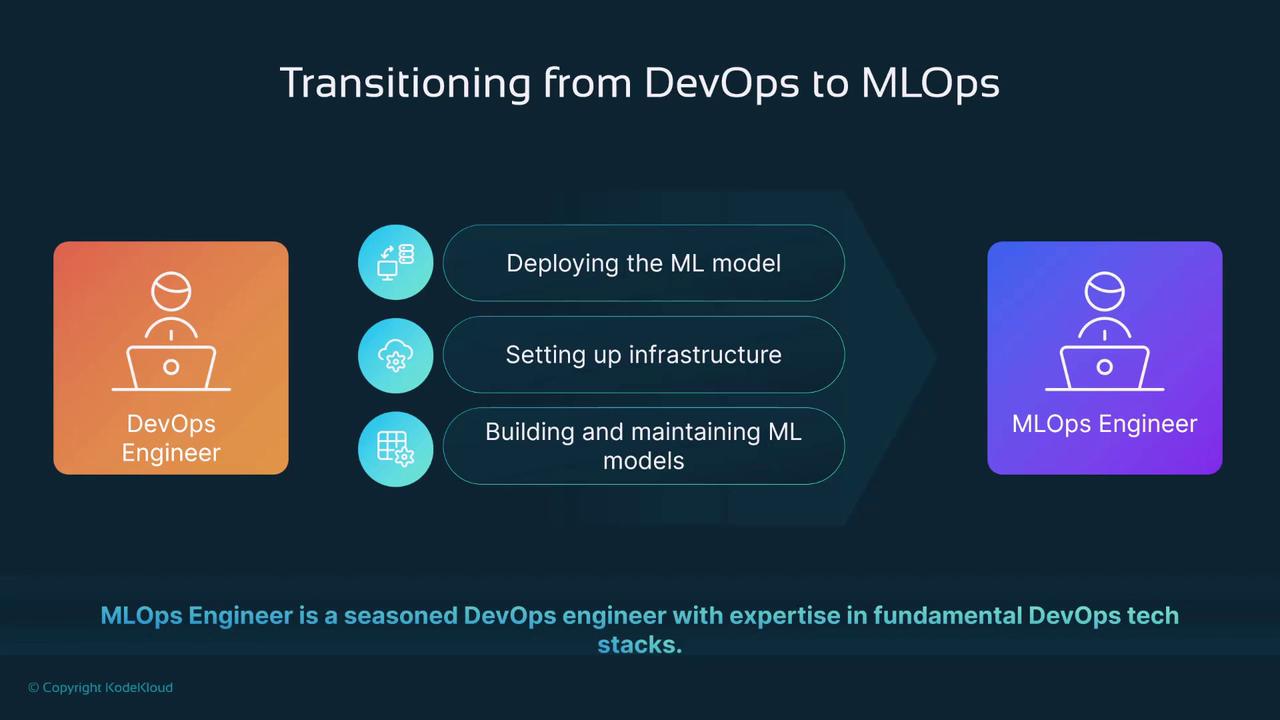
Conclusion
Building an effective ML engineering team requires a collaborative approach among product managers, data scientists, data engineers/analysts, and DevOps (MLOps) engineers. Each role contributes uniquely to ensure that ML solutions are not only effective in solving business challenges but are also sustainable through robust deployment and monitoring practices.
In the next lesson, we will explore the specific responsibilities of an MLOps engineer and discuss the skills necessary for transitioning from a traditional DevOps role to a specialized MLOps role.
For more detailed information on related topics, consider exploring the following resources:
Thank you for reading!
Watch Video
Watch video content